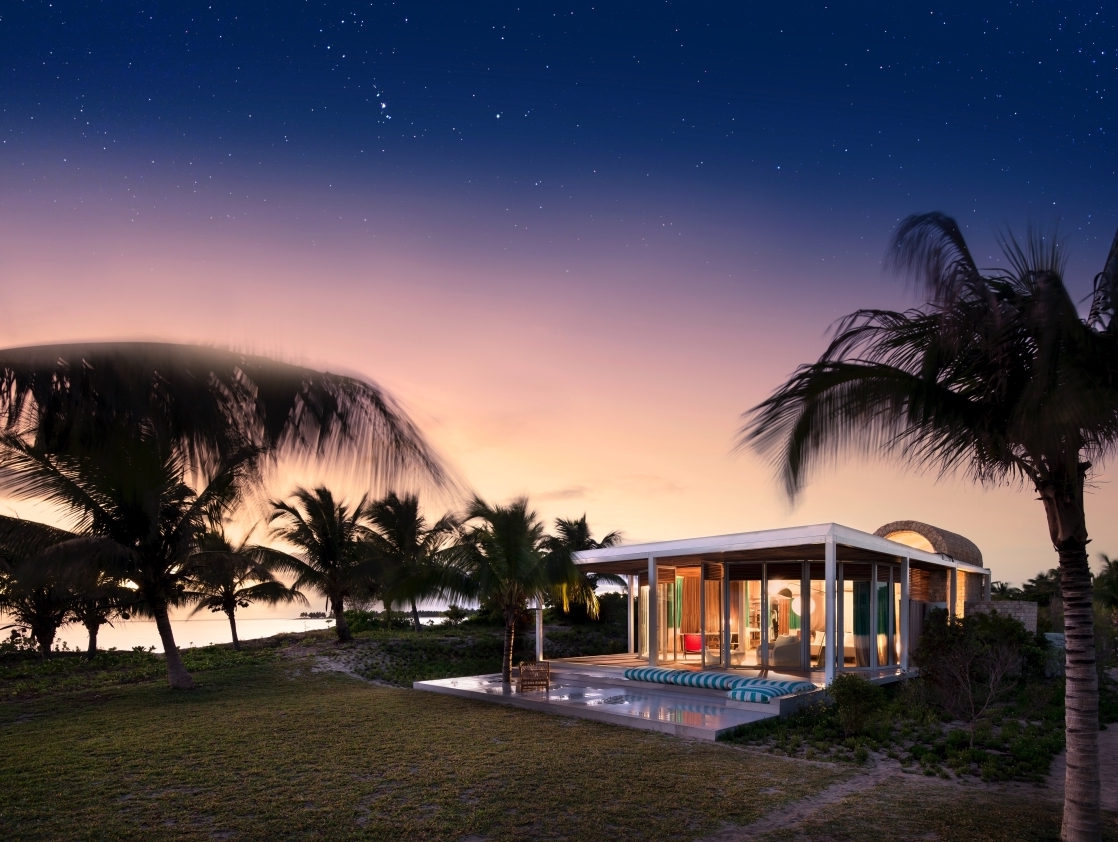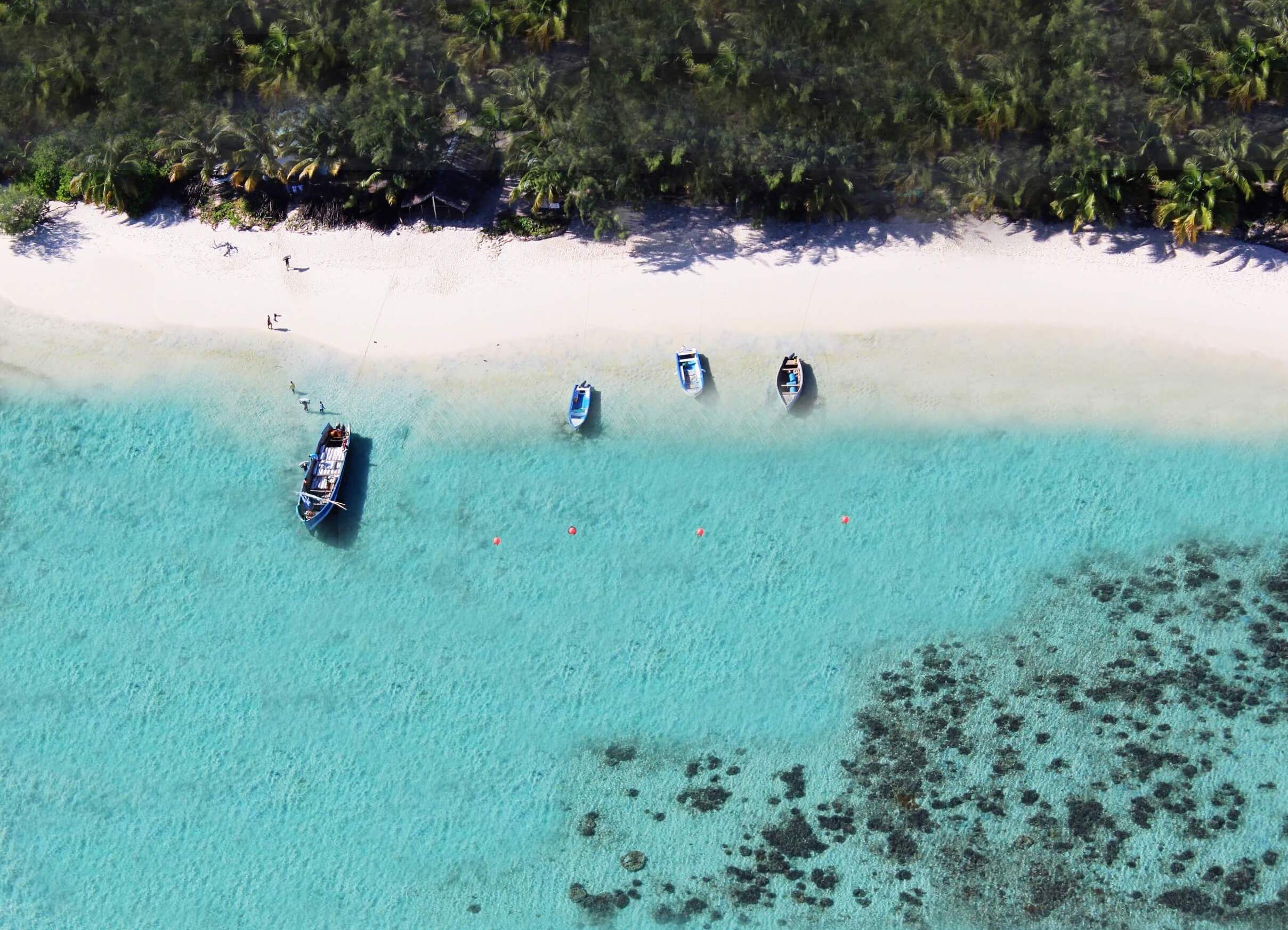
Mary Holland visits Madagascar’s new luxury safari lodge, Miavana, and finds the commitment to luxury matched by a commitment to conservation.
During the hour-long helicopter ride from Nosy Be to the island of Nosy Ankao, off Madagascar’s northeastern coast, the landscape shifts swiftly and seamlessly from palm-fringed beaches and azure waters to mangroves, limestone chasms and neat farm- land. Every time I peer down, a new terrain seems to drift below me. As new as it is to me, there is also something familiar about it.
At times there are hints of Mauritius’ recognisable white beaches and sapphire water while at other times I’m reminded of South Africa’s mountainous Western Cape, the familiar peaks rising in the distance. Then there are times it is completely unfamiliar: a dense jungle with unreachable pools of water crawling with mangroves – something that, up until now, I’d only seen in Jurassic Park.
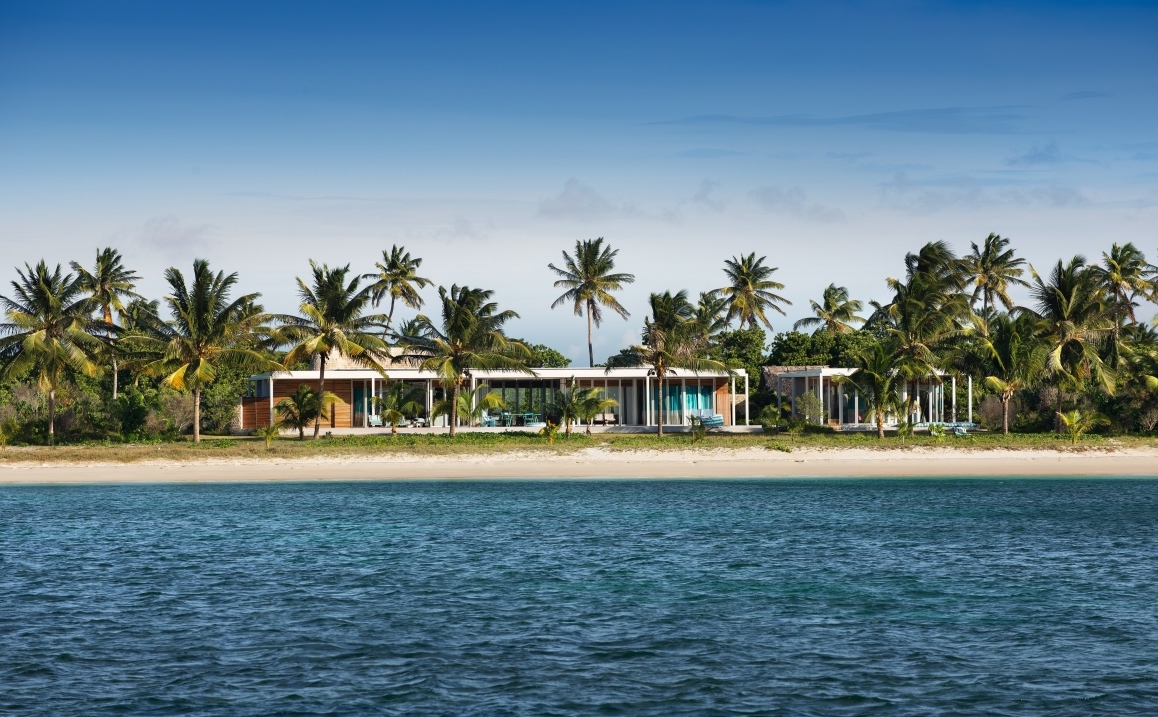
When I land on Nosy Ankao, it feels as though I’ve seen one hundred slices of Africa all muddled into one. Not surprising, considering Madagascar has long fascinated naturalists with its varied and fanciful landscape and distinctive flora and fauna. As I climb out of the helicopter onto the velvety beach of Nosy Ankao, I’m met with a team of staff clad in white and turquoise linen garb, one man holding a tray of icy drinks and chilled towels. I glance at the pearly stone hotel buildings behind him and the glistening pool that overlooks the beach. Could this be a five-star property in the Seychelles? (Considering the architects be- hind the hotel built another property in the Seychelles, it certainly could.) “Welcome to Miavana,” says the general manager, with an ease that can only come from someone living on a tropical island.
The new gem of the Indian Ocean, Miavana is a 14-villa, five-star paradise strung along a secluded beach on an almost-untouched island. It is the first and only property of its kind in Madagascar in that it isn’t only committed to five-star luxury, but also to protecting and preserving a small slice of Madagascar – a country which has been ravaged by deforestation, poaching and overfishing.
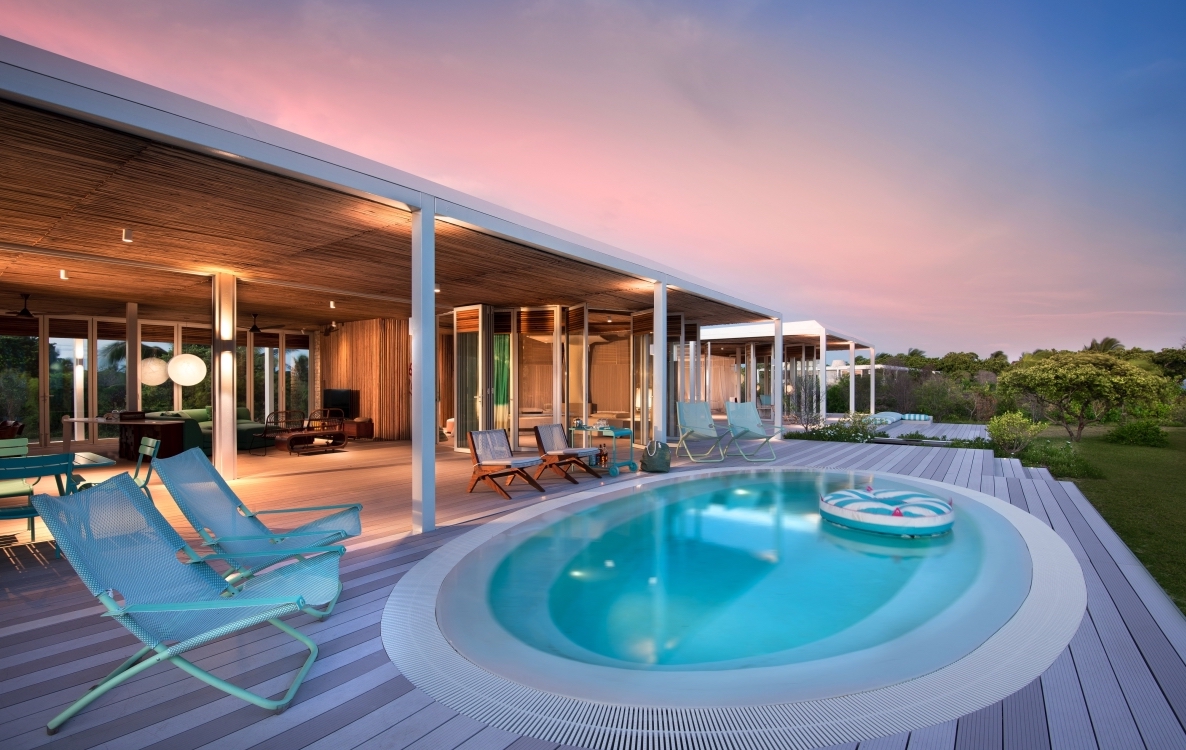
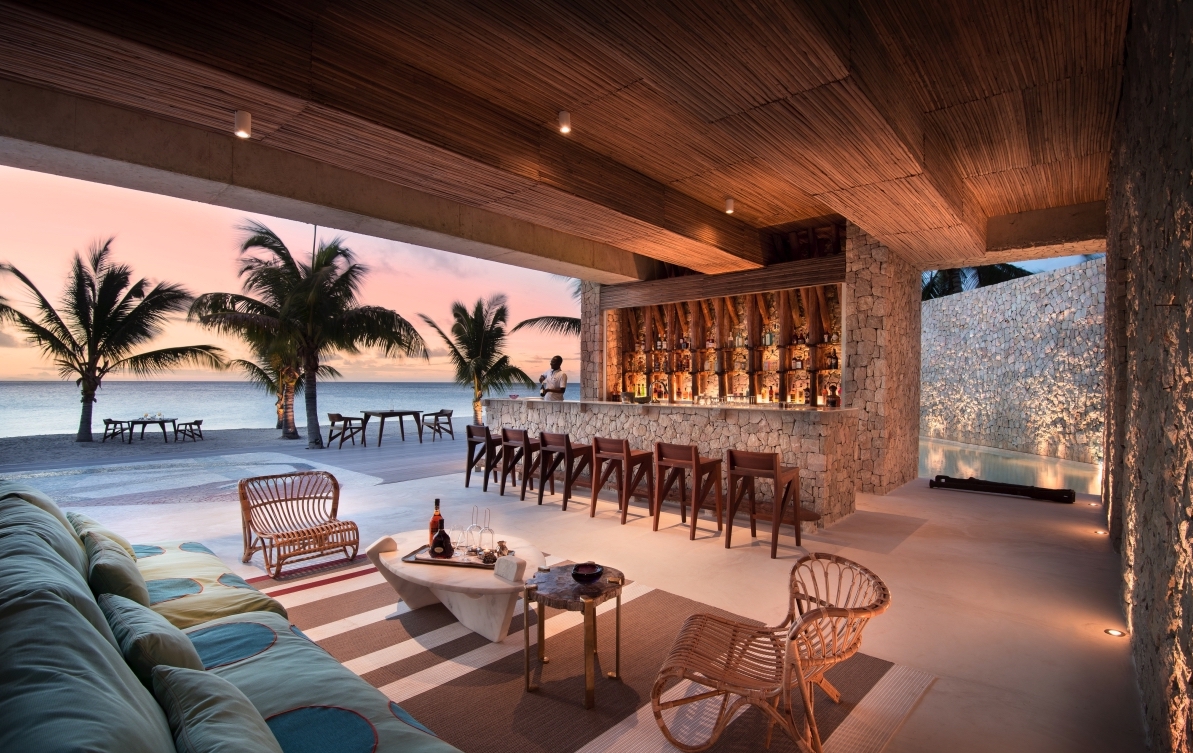
If the landscape doesn’t convince you Madagascar is a very special place, the country’s uncharacteristic animals certainly will. Eighty five per cent of the wildlife and ora on Nosy Ankao is endemic, and the surrounding sea is swarming with tropical fish (which can be explored by snorkelling or scuba diving – both available on the property). On nearby Cap du Diable Island, a brief helicopter or boat ride away, lemurs can be found scuttling through the trees, their bright, watchful eyes darting from branch to branch. They are quick and nimble, and although easy to spot, impossibly hard to follow.
Much like the rest of Madagascar’s wildlife and nature, lemurs are at great risk. “We have permission to reintroduce lemurs onto the Nosy Ankao,” activities man- ager Wayne Haselau tells me one evening as I enjoy a gin and tonic while watching the deep orange sunset over the iridescent blue ocean – a sunset that will surely ruin all others for the rest of my life. Haselau is unequivocally passionate about ecology and his enthusiasm is palpable. He took the job at Miavana with his sights on helping reintroduce and preserve local wildlife, much of which is bordering on extinction.
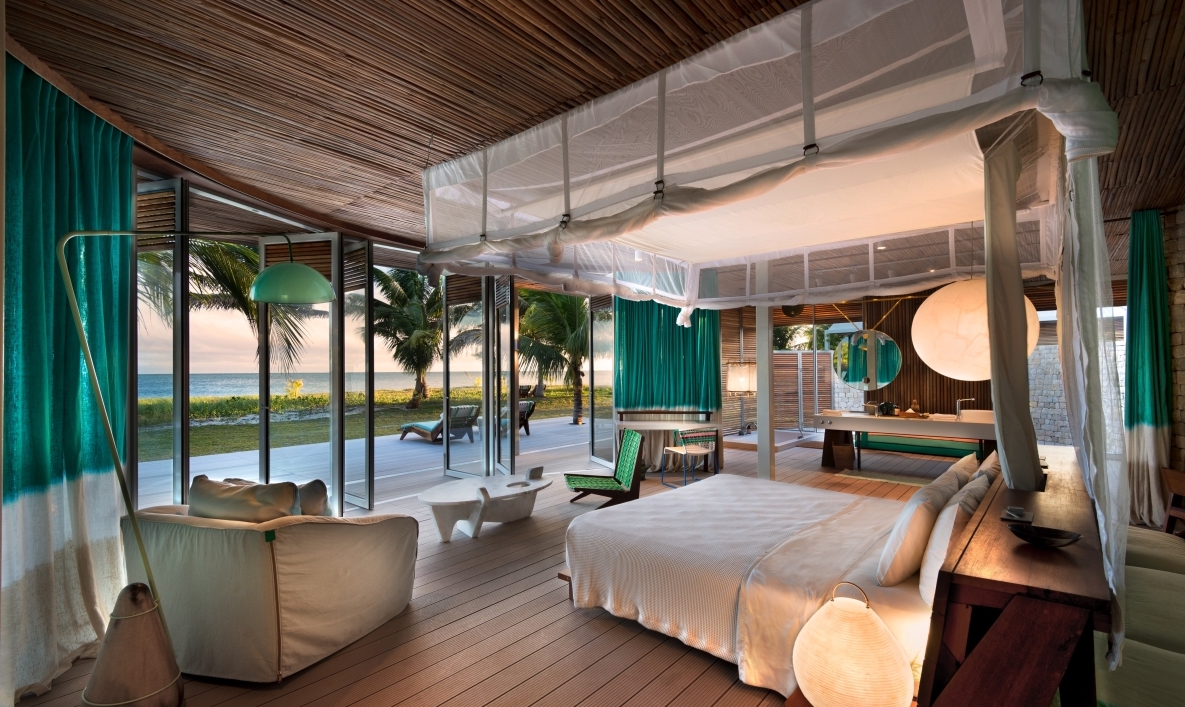
The new gem of the Indian Ocean, Miavana is a 14-villa, five-star paradise strung along a secluded beach on an almost-untouched island. It is the first and only property of its kind in Madagascar in that it isn’t only committed to five-star luxury, but also to protecting and preserving a small slice of Madagascar – a country which has been ravaged by deforestation, poaching and overfishing.
The next morning I am scheduled to meet Haselau for a walk in the beach flats. I wake early to the overwhelming sound of the ocean lapping the nearby shore, and curl from my private villa like a Disney princess. Dawn has just broken and the rosy morning light is attempting to break through the dense clouds. When I walk out onto the beach, there is not a single soul, just fishermen casting their nets in the ocean and hundreds of crabs shuffling across the sand. By the time I meet Haselau, the sun is up and the ocean is glistening in the light. Haselau walks me through the shallow waters, pointing out tiny creatures that would otherwise go unnoticed. His enthusiasm is so contagious that I follow his movements unknowingly, quickly finding myself ankle deep in water, my toes squelching through my socks and sneakers.
Even though the tiny fish and worms we see in the flats are inconspicuous, they play a vital role in bringing back other marine wildlife. Haselau points to a small green sprout that is shooting through the water. To me, it looks like a regular plant, but to him it signifies something great. “This must be the island’s first mangrove!” he declares with glee. I look down at the tiny shoot muscling its way through the water; clearly the team’s hard work at restoring the fragile ecosystem is paying off.
Flying out from the island, over the lodge which I’ve called home for a few days, I see the now-familiar forest of mangroves sur- rounded by dense jungle. I imagine this is what Haselau hopes to see off the coast of Nosy Ankao in years to come. The one small shoot we spotted might be far removed from the dense winding forest I see below me, but everything has to start somewhere. And why not now with Miavana?
